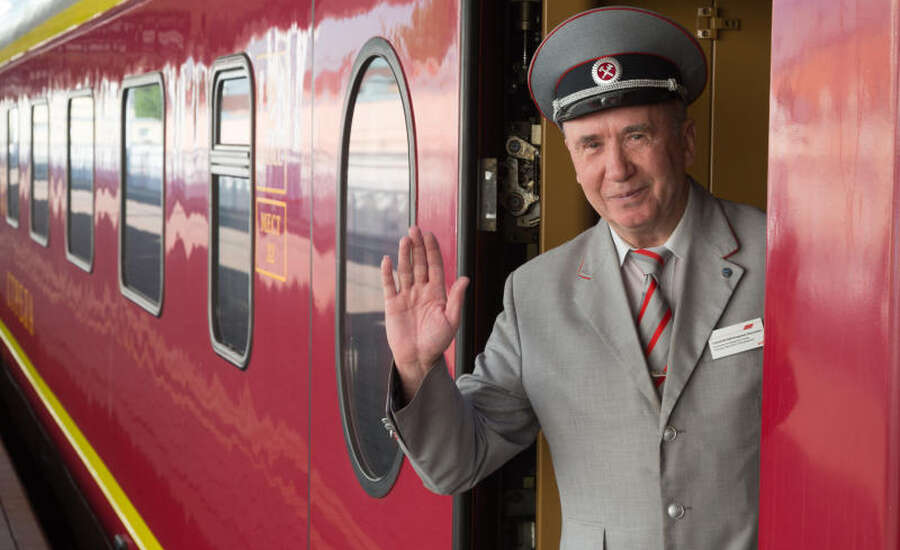
Photo by RZD
TYPES OF RUSSIAN TRAINS
Train travel is synonymous with travel in Russia. Distances covered can be vast, and journeys across the country are measured in 24-hour segments “sutki” rather than km or miles. There is an unrivalled romance in taking the sleeper train across the steppe, or departing from one city (i.e. Moscow) and arriving in the imperial splendour of St. Petersburg. Moscow is the main hub for journeys across the country, so most long-distance train journeys start or end here. Train stations are often named after the final destination, for example, Leningradsky station in Moscow is the station for trains to St. Petersburg (formerly Leningrad), so there is a logic.
Train types according to service level
Branded trains (фирменный)
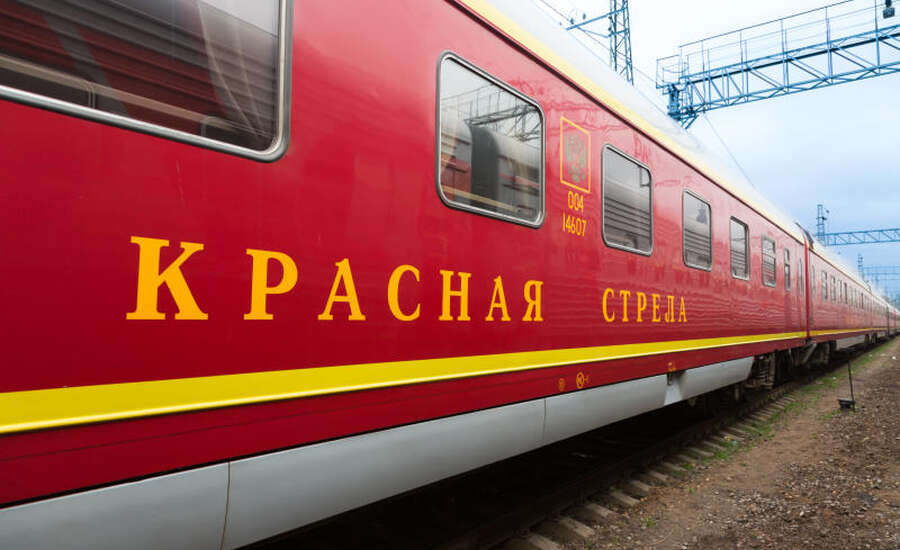
Photo by RZD
Branded or “special” (firmenny) trains are Russian trains that provide high quality service but with higher prices to match. The interior design of each train is tailored to each specific operator. Some cities have their own particular trains that they are very proud of and try to make as comfortable as possible. These trains typically have names such as Kama (a train run by the city of Perm, named after the Kama river that runs through it). Another example of a branded train is the famous Rossiya train which crosses the entire country, connecting Moscow to Vladivostok in the Far East. Branded trains usually have 1st, 2nd and 3rd class compartments as well as a restaurant car. We sell Russian train tickets for all branded trains.
Non-branded trains (нефирменный)
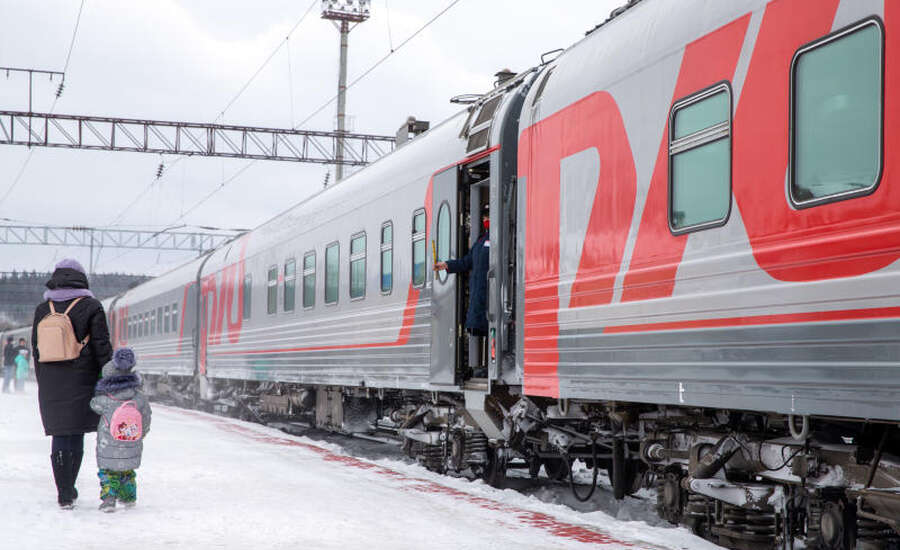
Photo by RZD
These are fast, good standard trains but without all the comforts of branded trains, and they usually make a few more stops. They mainly serve long distance routes and are quite popular with travelers. The trains run on a regular timetable. They have 2nd and 3rd class compartments, a restaurant car and sometimes 1st class compartments.
Train types by speed
High-speed train (скоростной, высокоскоростной)
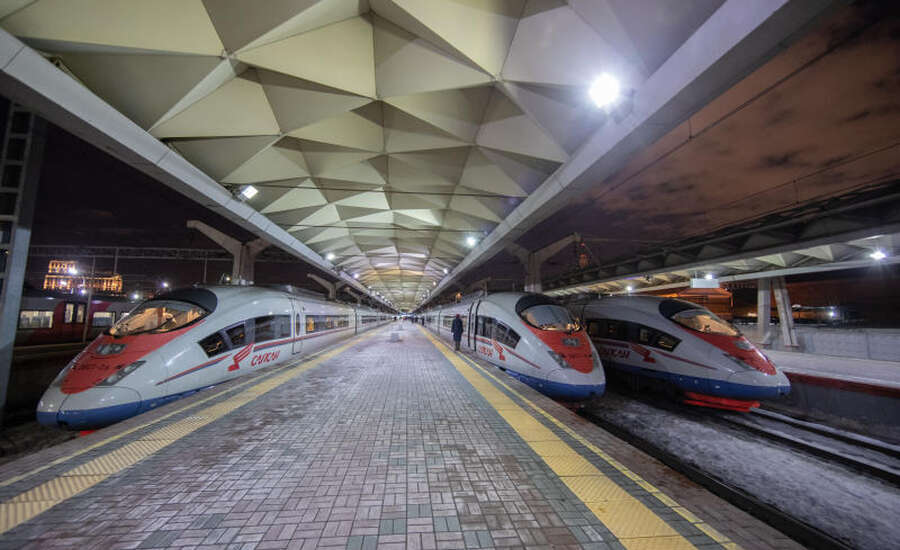
Photo by RZD
These trains have an average speed of at least 91 km/h and can reach maximum speeds of 141-200 km/h. The most popular, and modern, high-speed trains in the Russian railway family are named after birds: Sapsan (Peregrine Falcon) and Lastochka (Swallow). Sapsan operates the route from St. Petersburg to Moscow reducing the journey time to as little as four hours. The Lastochka trains cover shorter distances near large cities, for example, St Petersburg to Vyborg, but are quicker than regular trains.
Express train (скорый)
Express passenger trains have an average speed of 50 km/h to 91 km/h. The majority of long-distance trains in Russia are express trains. They can be branded or non-branded, depending on the level of services provided on board.
Regular train (пассажирский)
These trains usually travel slower than 50 km/h. They stop at every station along the route so it really takes a while to get where you want to go, however, these trains offer a great opportunity to see Russia at your own pace - slowly!
Train types by distance covered
Long-distance trains (дальний)
Most of the trains you can book on this website are long-distance trains. They all cover distances of 200 km and above. They travel at different speeds and offer varying levels of comfort. Some of them are overnight trains, some travel during the daytime and some can take several days to reach their final destination.
Electric suburban train (пригородный)
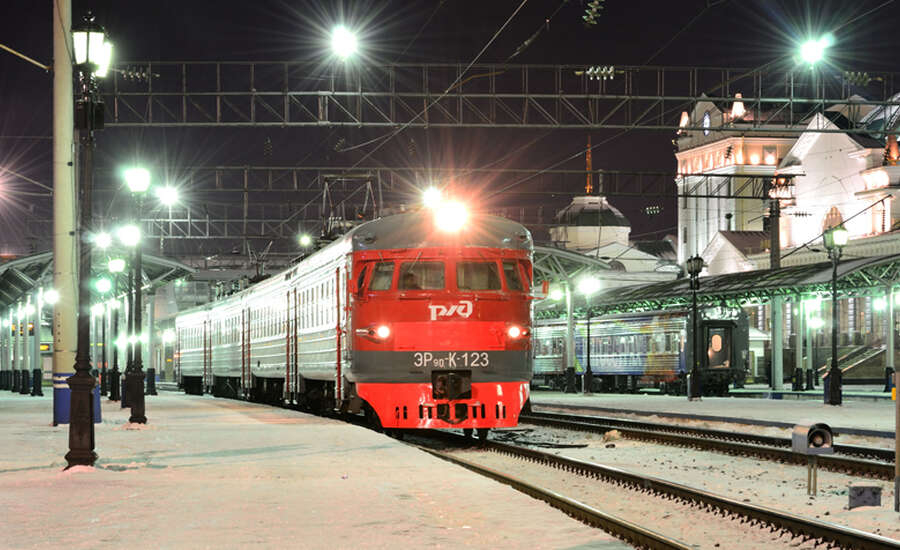
Photo by RZD
The much-loved elektrichki trains are electric-powered and cover suburban routes that connect large and provincial cities with their suburbs and outlying rural districts. Some older trains have metal or wooden benches as seats, but these days more routes are being upgraded to provide a more comfortable experience. They can be surprisingly busy on weekends or whenever the weather is good. It can be hard to find a seat, as these trains are a popular way for Russians to travel to their dachas (summer houses) or to the suburbs (i.e. visiting the beach in summer, or the palaces and parks in the suburbs). You may also be surprised by the range of goods offered for sale on board, or entertained by buskers along the way. Traveling this way provides a truly authentic experience of Russian life. Tickets are very reasonable and can be purchased easily at all Russian train stations.
Types of compartments
VIP (Luxury carriages)
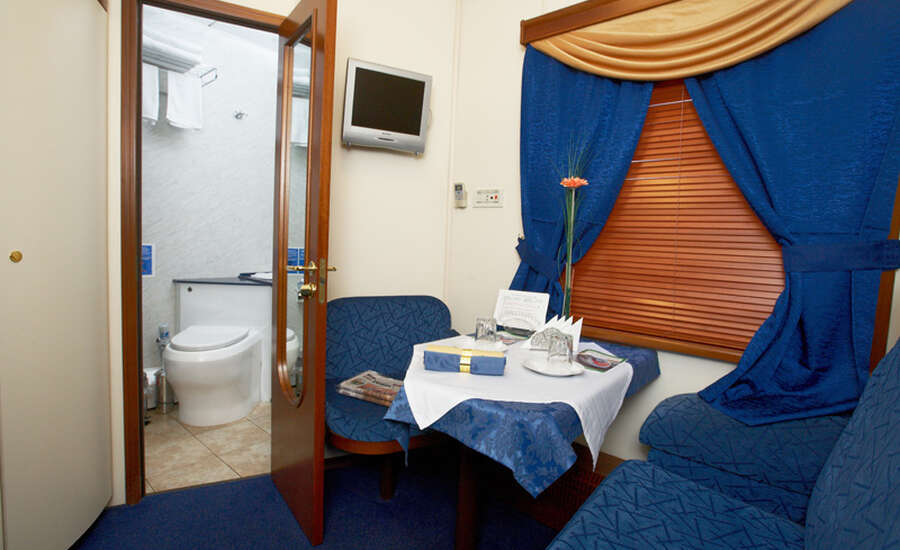
Photo by RZD
VIP carriages consist of four, five or six cabins. Carriages with just four cabins enjoy the benefit of a lounge bar. A VIP 1st class compartment is almost twice the size as standard class. They have a lower fold-out sofa bed (120cm wide) and an upper berth (90cm wide). They are also equipped with a table, an armchair, luggage storage space, a lockable sliding door, adjustable air-conditioning, TV/DVD and Wi-Fi connection throughout.
Each compartment has its own private bathroom with a shower (a real luxury), washbasin and, vacuum toilet (that even operates while the train is stationary). In addition to all this - even the bathroom floor is heated.
1st Class (SV - Sleeper Carriage)
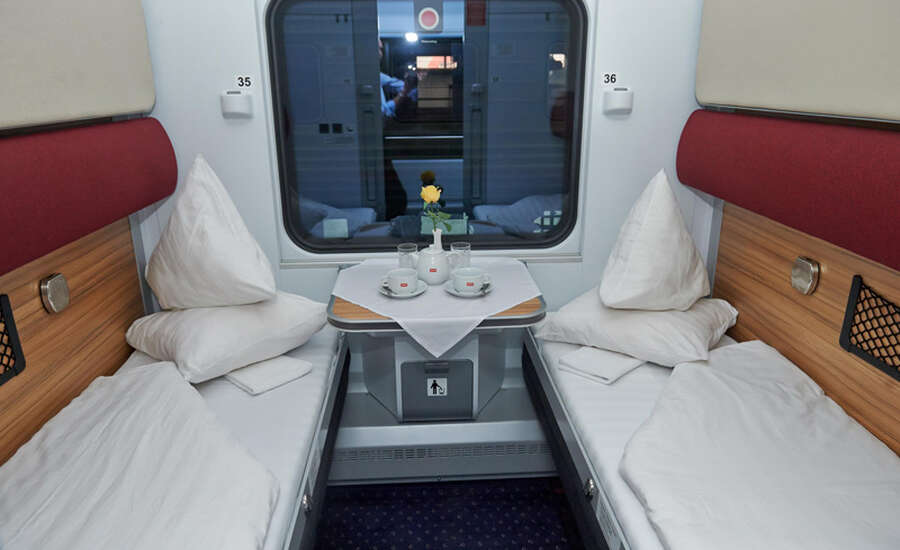
Photo by RZD
First class is the most comfortable and expensive option after VIP: the SV ticket. This is a first class compartment for just two people and contains two lower couches that convert into beds, with a table next to the window. On a very few long-distance trains there are also showers available in these compartments, which adds some exclusive comfort to the journey. If you would like to travel alone you can always buy two tickets for the compartment - this really is VIP travel! .
2nd Class (kupe - coupé)
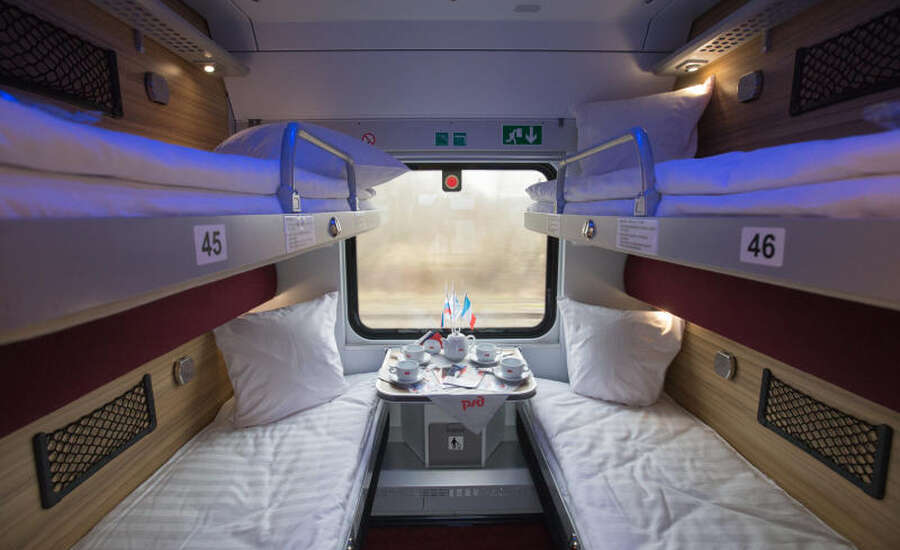
Photo by RZD
The next option is less expensive (2nd class), also organized in compartments, with each containing two lower and two upper berths. These are called kupe in Russian. Just like an SV, coupés have a door which locks from the inside to provide privacy inside the compartment. There is also a table by the window and storage under the lower berths.
3rd Class (Platzkart - shared open compartment)
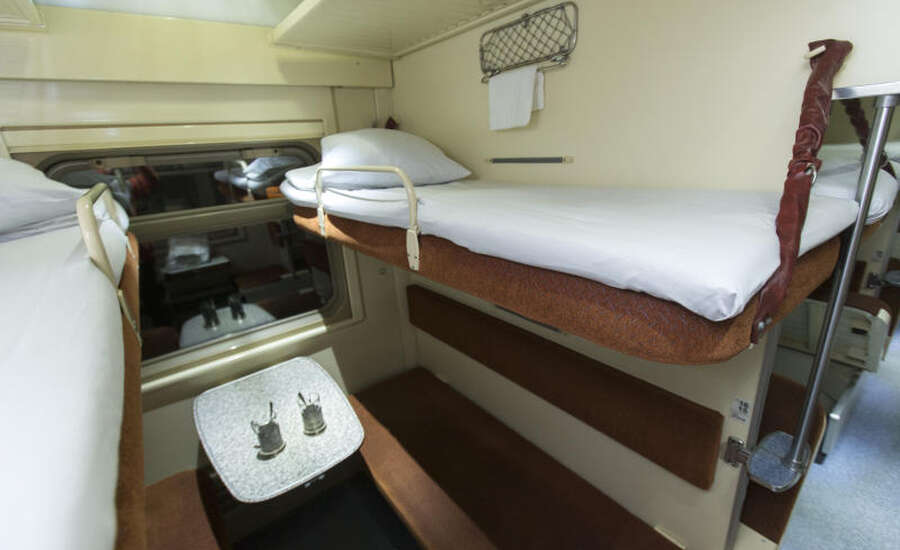
Photo by RZD
The next class is even cheaper still and is called Platzkart in Russian (3rd class). The entire wagon is open and there are no closed compartments or curtains. There are two lower and two upper berths, a small and narrow corridor and another two berths that are located on the opposite side near the window running throughout the wagon. There are no doors or compartments and therefore there is no possibility to lock anything, or to have any privacy. Platzkart tickets are convenient if you have a short journey or if you are not interested in comfort and need to economize. In some cases, traveling by Platzkart is more convenient for a woman travelling alone. In this case, she can avoid the possibility of getting stuck in a compartment with 3 strangers. If you travel to the very south of Russia during the mid-summer months, this might be a more comfortable option because the wagons tend to get very humid and stuffy and Platzkart cabins have better ventilation and therefore may be cooler. There is also a livelier atmosphere, as people pass the time by talking to each other.
Seats
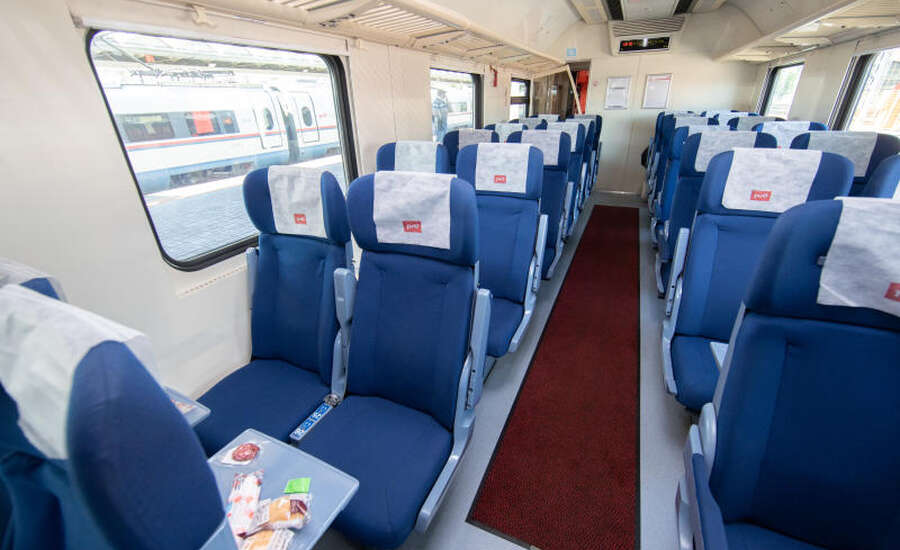
Photo by RZD
The last option for Russian train tickets are seats. Quite simply these are very similar to the kind of seats you will find on airplanes, and just as comfortable. Some of the newest high-speed trains offer a very comfortable high-speed travel experience. The route between Moscow and St. Petersburg offers a few trains, which have carriages with seats with different levels of comfort, depending on the class booked. Some of these trains can be expensive and cover the journey in as little as four hours, but if booked ahead can be cheaper than the overnight trains. As you can see, there is a big variety of traveling options when traveling by train, you just have to decide what is most convenient for you. Some trains such as the Allegro, on the Helsinki to St. Petersburg route and Sapsan, on the Moscow to St Petersburg have very comfortable seats, as well as a restaurant/café.
Get ready to be whisked along on a smooth and magical ride on the Trans-Siberian Railway.
Purchase your ticket safely and securely, then relax and let your train adventure begin!
Recommended by
Our travel group under the names Express to Russia, Russian Rail and Trans-Europe Express has been recommended and/or accredited by:

A portion of your order goes to helping underprivileged Russian children.
Learn more









